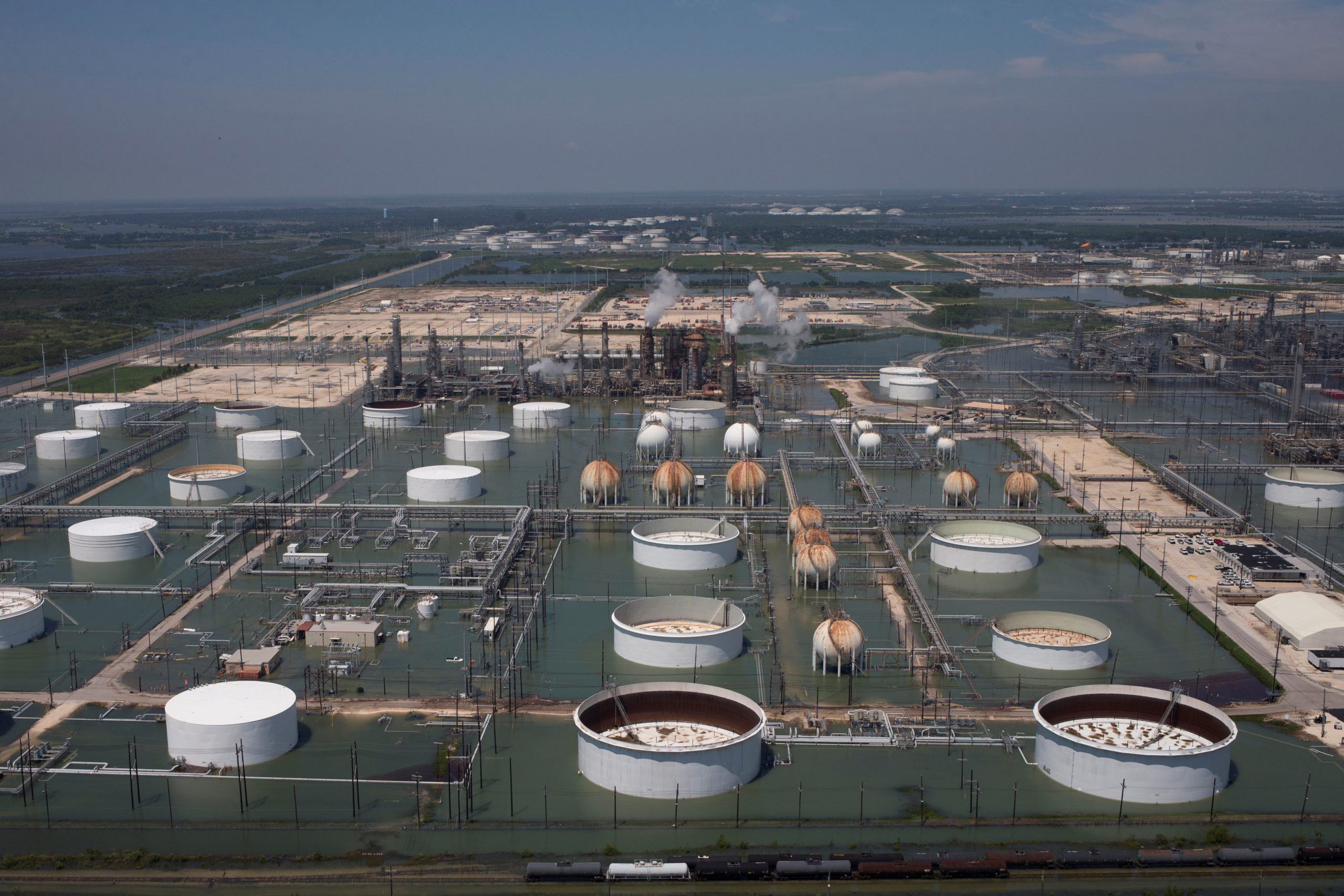
How deeply did Hurricane Harvey bite into U.S. base oil supply? Domestic production in September plunged by 1.8 million barrels after the late-August storm savaged the U.S. Gulf Coast, according to data from the federal Energy Information Administration.
Lube Report estimates that outages in September erased more than $200 million in revenue from the order books of affected refiners – a sales opportunity that vanished forever with the unmade material.
The countrys total output of base oils in September amounted to only 4.3 million barrels, a decline of 29 percent versus the 6 million barrels made in August. The shortfall can be laid squarely on refineries located in Petroleum Administration for Defense District 3, the district which includes Texas, Louisiana and Mississippi – three states that are home to 70 percent of U.S. base oil manufacturing capacity. The PADDs help users of EIAs petroleum data assess regional petroleum product supplies.
PADD 3s refiners produced only 2.2 million barrels of paraffinic base oil in September, a sharp drop-off from their August total of 3.8 million barrels. And they made only 662,000 barrels of naphthenics, compared with 819,000 a month earlier.
Numerous Gulf Coast refineries were clobbered by the storm, which came ashore on Aug. 25 and went on to inundate Houston, east Texas and parts of Louisiana. Texas giants Motiva (in Port Arthur) and ExxonMobil (Baytown) were partly or fully offline for much of September or beyond. Both companies had to put customers on allocations, lifted later in the fall.
Its unlikely that production would have accelerated enough in subsequent months to recoup the losses, several sources told Lube Report. No, thats a lost sales opportunity, said Steve Ames of SBA Consulting in Pepper Pike, Ohio. Besides the extended outages at Port Arthur and Baytown, he noted that Excel Paralubes in Westlake, Louisiana, also ran at reduced rates for a period after Harvey hit, as did Lyondells Houston Refining Co. and Valeros Three Rivers, Texas, plant, briefly.
Rivals would have been quick to take up the slack from the hobbled plants, he pointed out. Theres a lot more capacity overall than actual demand, so if they werent supplying it, someone else did. Someone else would have picked up that business.
The ferocious storm also snarled truck, rail and barge traffic for many weeks, adding to the supply woes, reminded Jeremy Kriska with Tulstar Oils in Houston. Looking back, he said it was extremely difficult to get trucks in and out of terminals; shippers also found railcars and flexitanks hard to come by. Since then things have gotten much better, but were still building in a little more lead time – two or three more days – for deliveries.
Despite such hindrances, Kriska feels the market is fairly well caught back up now, adding, The plants that were down sell a lot domestically, and in some cases it looked like their exports of spot volumes got put on hold so they could supply their contracted volumes here first.
EIAs export figures support this view. Base oil exports from PADD 3 during September shrank by around 900,000 barrels, compared with shipments one month earlier. Meanwhile, exports from other parts of the country were essentially flat. Total volumes exported nationwide amounted to 2.7 million barrels in September, compared with 3.6 million in August.
Base oil imports, by contrast, took no hiatus during August or September and continued to flow at their usual rate of about 1.1 million barrels each month.
Joe Rousmaniere of global base oil trader Chemlube International in Harrison, New York, agreed that supply is mostly back to normal, with no lasting effect on the import/export trade. In the last few weeks, massive amounts of exports have been going out, he said. We saw 70,000 tons shipped from the U.S. Gulf to India and the Middle East in the last two months. And were still seeing lots of imports coming in, there has been no hiccup in Group III imports.
Traditionally, base oil production tails off in December, as both buyers and sellers live off their tanks to trim inventories and tax liabilities before Dec. 31. Its also the time when bargain-hunters hope to snag surplus barrels at basement prices.
Not this year, said Rousmaniere. A very wise man once told me, Nothing ever happens in base oils between Halloween and Valentines Day. Well, thats not true anymore. Base oil is a global market, and stuff is moving everywhere. Were seeing a Group II shortfall in the Middle East, for example, and a tug-of-war between the U.S. and South Korea to supply India. The next big thing were watching is Asia, where there could be a bunch of tightening due to some big refinery turnarounds in the first quarter.
On the domestic front, Tulstars Kriska also sees the year ending on a balanced footing and with less pressure on refiners to cut deals to unload their excess barrels. The mid-range Group II product was tough to find for a while, until Motiva lifted its force majeure, but thats better now, he said. And were not seeing the usual year-end downturn, or refiners dumping inventories. There were no Cyber Monday specials to be had this year.
Until Hurricane Harvey hit, U.S. producers had been on track to make a bit more than 60 million barrels of base oil in 2017. Between the 2-million-barrel chomp that Harvey took out of September, and any subsequent production losses, its highly unlikely theyll reach that mark.

Photo: Adrees Latif/Reuters/Newscom